




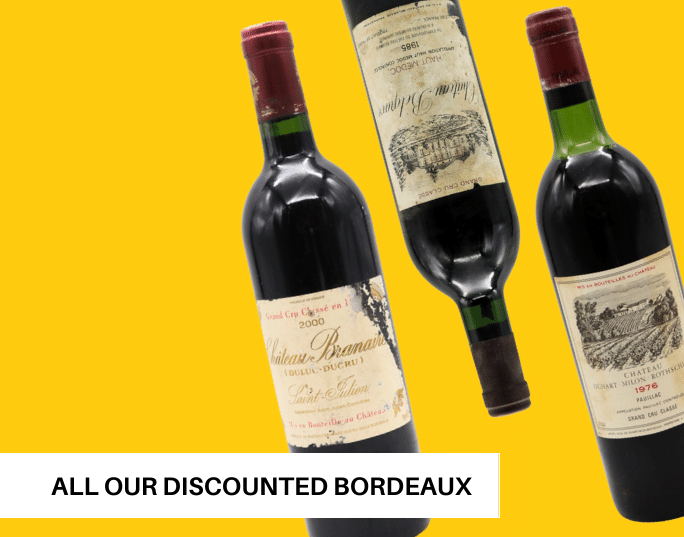







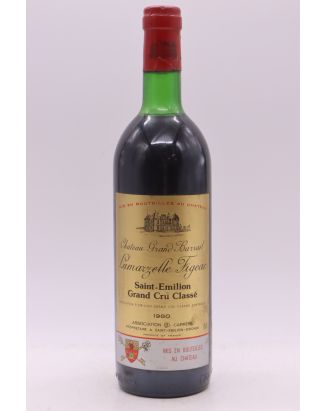

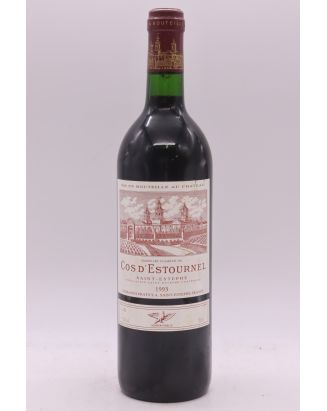

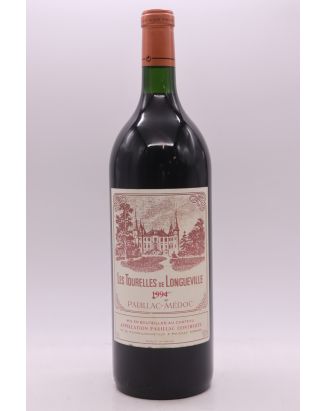

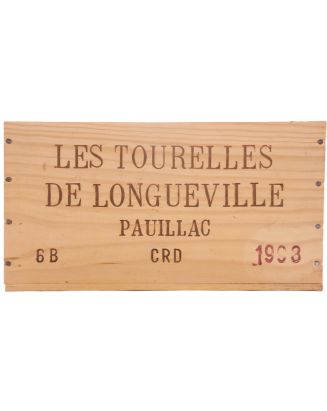
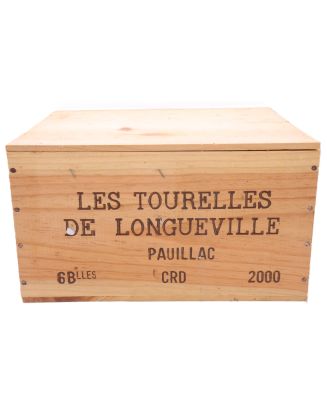











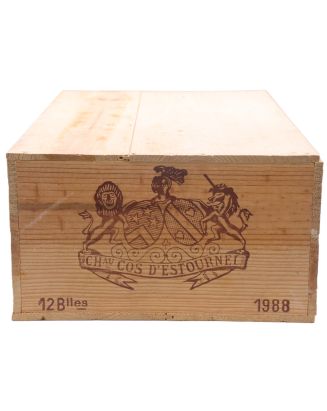
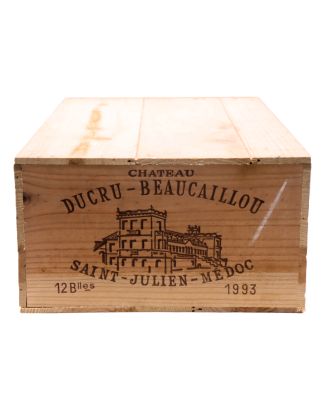

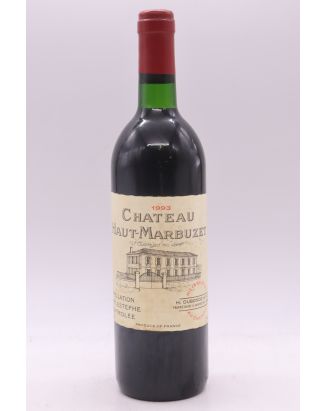


A world reference and renowned for the quality of its top-of-the-range wines, it is the birthplace of many of the châteaux listed in the famous 1855 classification, a guarantee of the quality and reputation of the Bordeaux Grands Crus Classés that appear in it.
With its rich heritage and history, the Bordeaux wine region has built up a world-renowned heritage over the centuries, putting France and its wines at the forefront of the world stage. The Romans played a key role in the development of the vineyards.
Within the Bordeaux region, the Left Bank and the Right Bank, on either side of the Garonne, are numerous Châteaux spread over no fewer than 57 appellations.
Situated to the west of the Garonne, the Left Bank is made up of several prestigious appellations: Médoc, Graves and Sauternais.
The Médoc is made up of the following AOCs (Appellation d'Origine Contrôlée): Margaux (Château Margaux, Brane Cantenac, Cantenac Brown, Giscours) Listrac-Médoc, Moulis en médoc, Saint-Julien, Pauillac, Saint-Estèphe and Haut-Médoc. Each of these AOCs has its own characteristics and châteaux that are well known to wine-lovers. The Médoc wines are delicate and voluptuous, with a majority of Cabernet Sauvignon grapes, giving them a fine aromatic palette combining structure and finesse, as well as an attractive ageing potential.
The Graves appellation comprises the Pessac-Léognan, Graves and Graves Supérieures AOCs. It produces rich, concentrated and complex wines with smoky notes. Tannic and full-bodied, a short stay in the cellar is the perfect way to release the harmonious, complex aromas of these wines.
The Sauternes appellation includes the Sauternes and Barsac appellations, which are the most emblematic. The greatest sweet wines come from these fine appellations, including the magnificent Château d'Yquem.
Situated to the east of the Garonne, the right bank also boasts some prestigious AOCs, notably the Libournais, the most famous of which includes Saint-Emilion, Pomerol, Lalande-de-Pomerol, Fronsac and Canon-Fronsac.
The wines of Saint-Émilion are the most representative of the right bank: they are full of elegance and finesse, seducing tasters with their aromas of black fruits, spices and plums. As they age, the aromas evolve towards notes of leather and undergrowth, with beautifully blended tannins and exquisite length. The best-known red wines from this appellation are Angélus, Ausone, Beauséjour Bécot, Canon, Cheval Blanc and Pavie.
Pomerol, the smallest of the Bordeaux appellations, is also full of real treasures, including the best-known, Pétrus. Pomerol wines have a magnificent texture, dense and velvety. They have a silky mouth feel all their own. Delicious, fine tannins, great elegance and a long, fresh finish - that's what a great Pomerol is all about!
In addition to the classification of Bordeaux wines (grand vin de Bordeaux, grand cru, cru bourgeois, grand cru classé de Bordeaux, grand cru classé de Saint Emilion, etc.), the opinion of wine critics is also closely followed when choosing the best Bordeaux wines, and helps to distinguish - among other things - a small wine from a good wine, a great wine or an exceptional wine. This is particularly true of the Robert Parker guide, whose score can elevate a wine to the rank of a great Bordeaux. And even if the rating of a wine is not everything, it also takes into account the overall perception of the quality of the vintage. A 'good year' or 'exceptional year' will be an important factor in deciding whether to buy a great wine!
A number of Bordeaux estates and châteaux rank among the world's finest red wines. These Grands Crus break records in the Parker, Bettane Dessauve and Wine Spectator ratings, including Pétrus 1989, Château Margaux 1996, Latour 2003 and Haut Brion 2009.
The appellations considered to be the best are Margaux, Pomerol, Saint Emilion and Saint Estèphe, Pauillac and Sauternes. The white wines of Sauternes are also highly prized, especially Yquem, which is the only white wine to feature in the 1855 classification. Bordeaux offers delicious wines in many colours!
Apart from Bordeaux wines classification (grand cru, cru bourgeois, grand cru classé of Bordeaux, grand cru classé of Saint Emilion…), the opinions and recommendations of critics and specialists are also very useful to help wine lovers in the choice of the best Bordeaux wines. Indeed, these ratings can help to make the difference between a basic wine from a good or premium wine, and even from an exceptional one. One of the most renowned critic is Robert Parker and his ratings have a considerable influence on wines sales and prices. For example the price premium for a 100/100 Parker rated vintage and an 90/100 for the same wine can be up to 300% (i.e. Montrose 1990 vs Montrose 1989)! Even if a wine rating is also linked to the personal tastes of the critic, it can be an indication concerning the overall quality of the vintage. In this way, a « good vintage » or « exceptional vintage » will be a decisive criteria to choose to buy a very great wine!
The overall quality for Bordeaux classified growths has made tremendous improvements over the last 30 years thanks to wine growing (yield reduction, later harvest dates) and wine making techniques. Therefore, there is no poor Bordeaux vintage (except 2013) and most recent Bordeaux vintages are rather very good (2012 or 2014) or exceptional vintages (2009, 2010, 2015, 2016). Bordeaux is also well known for French oak ageing (usually 100% new oak and 18 to 24 months ageing for 1855 classified growths) giving cacao, coffee, and grilled aromas rather than the cinnamon and vanillas flavours of american oak.
Although the grape varieties used differ slightly depending on the wine-growing region, all Bordeaux wines have one thing in common: they are almost exclusively blended wines. Merlot and Cabernet Sauvignon are the main grape varieties used in red Bordeaux (which accounts for 80% of the vineyards). Bordeaux whites, on the other hand, are made from Semillon and Sauvignon and can be classified as either dry or sweet white wines.
Although the grape varieties used are slightly different depending on the bank, the common point of every Bordeaux wines is that all are blended wines. Red Bordeaux wines are mainly composed of the two following grape varieties: Merlot and Cabernet Sauvignon, which account for around 80% of the Bordeaux vineyard. Bordeaux white wines are mainly made up with Semillon and Sauvignon and can be considered as dry wines or sweet wines, depending on the designation.
Bordeaux Vineyard climate is cool and atlantic, which is very good for Cabernet Sauvignon and Merlot. It is warm enough to get ripe grapes and cool enough to avoid over ripeness, even if because of reduced yield and climate change, alcohol level can reach 15% for Merlot from warmers Bordeaux vintages. On classical years, a Bordeaux vineyard balanced climate enables most Bordeaux wines to keep sufficient acidity and complex aromas. Most Classified growths require patience and are drinkable after 20 years, cheaper Bordeaux wines such as crus Bourgeois need 10 years cellaring, this fresh balance and ageing potential makes Bordeaux different from “Bordeaux blends” from the new world.
Bordeaux wines are generally characterised by one of three types: supple and fruity, round and structured, powerful and intense.
The fruity, supple red wines go perfectly with white meats and savoury tarts, followed by hard cheeses, for example, or a few exceptions such as Saint Nectaire. The rounder, more structured wines can be served with meat in sauce or grilled. Finally, strong, intense red wines and strong-flavoured meats, such as lamb or game, as well as mildly spicy sauces, go very well together.
As far as Bordeaux whites are concerned, sweet wines such as Sauternes and Barsac will go perfectly with a caramelised dessert like tarte tatin if you're looking for harmony; if you're looking for contrast, you'll have to turn to blue-veined cheeses (Roquefort), Asian-influenced dishes sprinkled with curry or tangy desserts like rosemary-roasted apricots.
Faced with such a multitude of appellations, châteaux, notes and vintages, it's not easy to choose a wine or know when to drink a wine at its peak. That's why at Vins & Millésimes, we offer you the chance to buy your great Bordeaux wines from a selection of grands crus, ready-to-drink wines and old vintages at the best prices, always dispatched within 48/72 hours!
With all the designations, chateaux, ratings and vintages, it can be very difficult to choose a wine or to know when a wine will be at its peak. That is why at Vins & Millésimes, we offer a huge catalogue of great ready-to-drink wines and grands crus from Bordeaux as well as selection of old vintages at the best price. 100% of our wines are in stock and always shipped as quick as possible!
Discover our great Bordeaux wines at the best prices: mature grand crus, old vintages or Bordeaux wines for laying down, always 100% in stock. ✓Fast, secure delivery